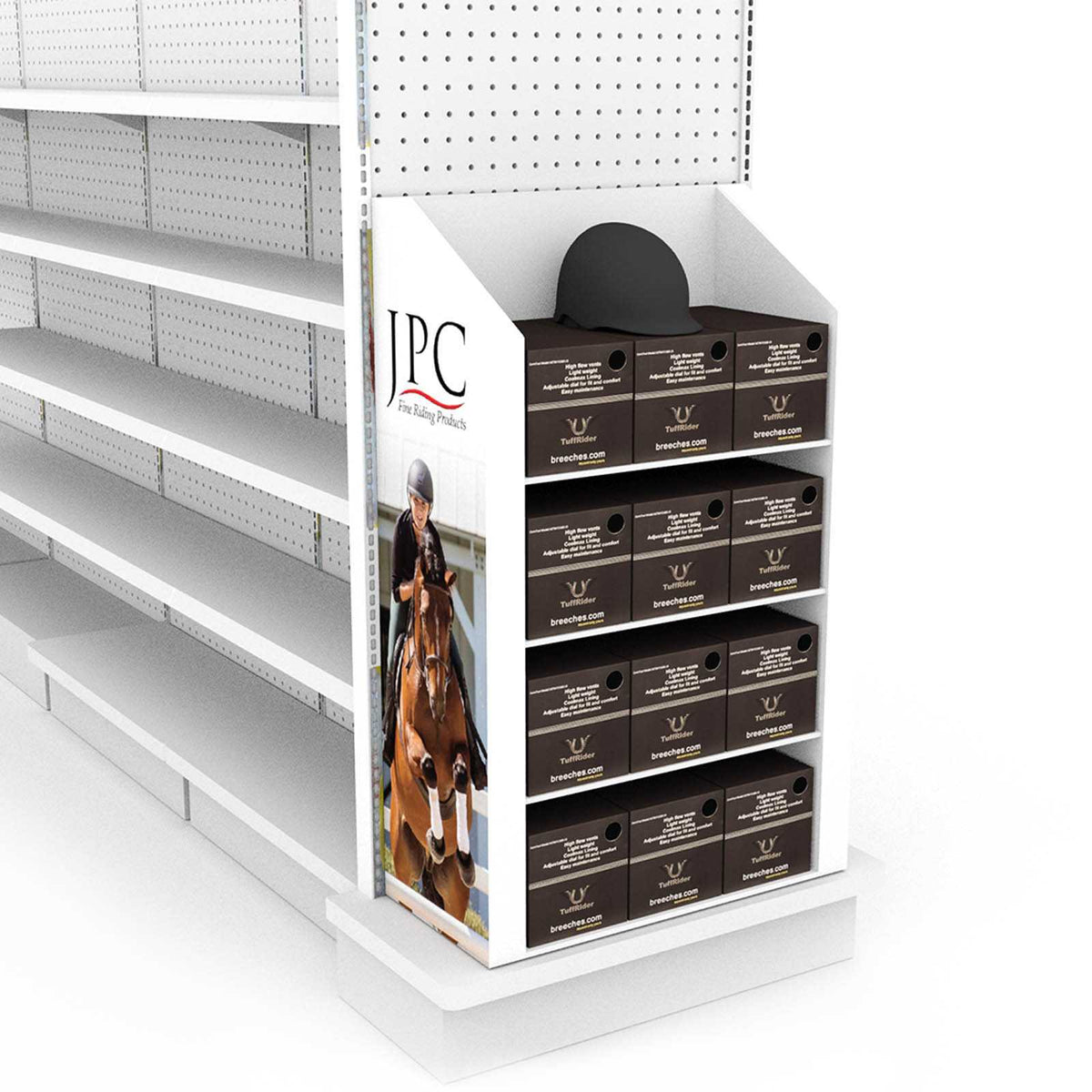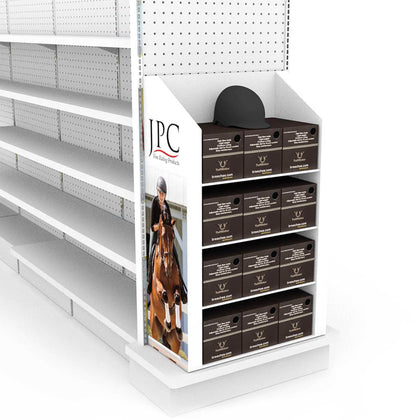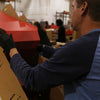

Having Trouble Picking A POP Display?
When it comes to choosing a POP Display for your product launch, the choices can be a bit overwhelming. What if you choose the wrong style of display? What if it doesn't hold enough products or restock easily? These are all great questions to keep in mind when making a choice.
So, we put together an easy-to-use form to help you out. Simply fill out the form below, and our team will review your answers. Then we will email you in a few minutes about what we think the best type of POP Display is for your products!
Table Of Contents
What Are The Goals Of A POP Display?
A pop-up display is essentially a way to promote one product or brand to consumers. It's designed to catch the eye of someone walking by your products and attract attention with taglines, logos, pictures, etc. The goal of a pop-up display is to get the customer to stop in their tracks long enough to check out what you're selling and, hopefully, make an impulse purchase.
POP Displays are typically used in retail stores like convenience chains, pharmacies, supermarkets, gas stations, dollar stores, and big-box retailers (like Target). They're meant for impulse buys because people usually don't plan to stop when they walk into these stores. However, that's not always true nowadays, so they could be more useful in some cases than others!
Raise Awareness About Your Products
POP Displays are also great at raising awareness about upcoming products or products you might launch soon. They can do this because people are more proactive when they see something interesting in the store. For example, if your POP Display showcases a product lineup for the future, then customers will go to stores looking for these items while they're not available.
This works especially well for seasonal items that coincide with the holiday shopping season. For example, let's say you have some gorgeous Christmas gift baskets on display. People who walk by might stop and ask about them even though it's not close to Christmas yet! That means one less person leaves empty-handed during the holidays, which makes for happy customers who come back to buy your products later.
Enhance Your Marketing Campaign
POP Displays are also great for enhancing your marketing campaign. A POP Display can help promote brand awareness, communicate brand values, reinforce your message, and attract attention. We'll break each of those down individually, starting with brand awareness.
For example, you could be working on a project with an event planner to host a company expo at their venue. It would be really helpful if you could provide them with some signage they could put up around the exhibition space that somehow promotes your business or product line. You might have something on display that helps tell visitors more about what your company does or who you are as people. That way, when attendees leave the expo, they have more information about who hosted this event so they can give their business to you over your competitors.
Organize Your Products For Easy Shopping
Another significant factor with POP Displays is organization. It's best if your products are organized so that people don't have to dig around on your display or look at multiple items before they can make a purchase. You want your POP Display to help create an easy shopping experience for customers.
For example, let's say someone wants to buy new running shoes but is overwhelmed by the number of options available on some random wall at the mall. They might not find what they need and leave without buying anything since it took too long to see what they want. That doesn't look good for you as a retailer! But if you put those same shoes in a nice, well-organized display next to other popular items, it will be easier for them to shop.
Increase Sales By Attracting More Customers
POP Displays are best used to show off your product. Sometimes, consumers will notice the products on your shelves or tabletop displays, but for some reason, it just doesn't entice them to buy. That's where POP Displays come in! These types of displays draw attention and can help convince customers that they should try out your products.
This way, more people will try out your product, giving you a better chance of making a sale. Each type of POP Display has different strategies for drawing customers in.
Questions To Help You Choose A POP Display
The type of POP Display you will need depends on several factors, but knowing them will make the entire process much more manageable.
How Much Does The POP Display Hold?
How many products can your POP Display hold? Depending on the display type, your options could be very limited. To determine this, it is best to visit retail stores and examine other displays on the store floor. The number of products that fit on the display also impacts how often they need to be restocked.
The biggest enemy of a POP Display is downtime. Without a product on the display, there is nothing to sell!
Where Will The Display Be In The Retail Store?
It is important to consider the location of your POP Display in the retail space. Ask yourself if you want people to be able to get close enough to see your product. Talk with your retailer about what options are available to you.
Displays on shelves typically have more standard sizes and limitations, while displays directly on the floor simply need to fit within the general aisle dimensions.
What Is The Size Of Your Products?
Each point-of-purchase display has its general practices for product sizes. That's because you want to make sure the products are easy to shop for and the display is never empty.
For smaller, lightweight products, you will typically want a Sidekick, Counter Display, or Endcap. Larger products will use Pallet Displays, Floor Displays, and Dump Bins.
Best Practices For Each Style Of POP Display
PDQ Trays + Shelf Displays
This is the largest capacity (easily holds larger quantities of product). It is commonly used in gas stations and convenience stores, where there is usually more space available. People don't typically go into the store with a planned list of items they're looking to buy. Smaller products, like candy, can fit nicely on counter displays, whereas apparel may not.
These displays are all about impulse purchases, so fill them with lightweight, low-cost items to draw customers in.
Sidekick Displays
Similar to counter displays, sidekick-style POP Displays tend to be a bit smaller. They make good use of a little-used corner or alcove to attract customers' attention as they walk by. These can also be used in the center checkout lane for impulse buys.
These displays can be in the middle of an aisle, near the register, and anywhere in between. Sidekicks are focused on new items, trying items in different areas of the store, and even sales.
Endcap Displays
Endcap displays are similar to Sidekicks but slightly larger. Like Sidekick Displays, they work great for impulse buys, new items, and sales. They pop up at the end of an aisle (hence the name). Some retailers like these because they break up the flow of traffic from one side of the store to another.
Customers typically don't go out of their way to look at Endcaps; however, you can still give them a reason to do so with good copy or eye-catching graphics. If you design them as a store-within-a-store, you can start educating customers and getting them to learn more about your brand.
Floor Displays
The most versatile category of all POP Displays. Floor Displays come in various sizes and typically hold the most products. They can be anywhere in the store, from the entrance to the edge of an aisle. Floor Displays can be designed around any style of product.
A great way to use these displays is to include a header with graphics that changes throughout the year depending on the season. This allows you to keep the display fresh without breaking the bank.
Dump Bin Displays
Dump Bin Displays are usually located at floor level or slightly below (often on a pallet for easy moving). The point is to invite people to dig around for deals, but be careful not to lose money by having too many items here. The more focused on a category these displays are, the better they perform.
If you have a bulk inventory of products that are ready to sell in an organized pile, these are the best-performing displays.
Pallet Displays
The big brother of Dump Bins, and too many items can hurt your brand's image (especially if it is a high-end brand). These displays put more focus on the products than the display itself. You'll find these in wholesale clubs or industrial/warehouse stores.
Whether you're using a Full-Panel, Half-Panel, or Quarter-Panel Display, these displays have a few advantages. They can include a Pallet Skirt with large text that outlines product benefits and draws customers in. But these displays are all about a premium look that enhances your brand's image.
Contact Bennett Today For A Custom POP Display!
There are a variety of different POP Display styles to choose from, each with its own set of benefits and best practices. It's important to consider your product and what type of customer you're targeting when deciding which display style will work best for you.
For example, if you sell high-end products, an Endcap Display may be the best option for showcasing your items in a premium way. If you have a bulk inventory of ready-to-sell products, Dump Bin Displays might be the way to go. Whatever the case, contact Bennett today for help creating a custom POP Display that will increase sales and promote your brand!
If you're ready to start designing a display, contact us today for a quote!




